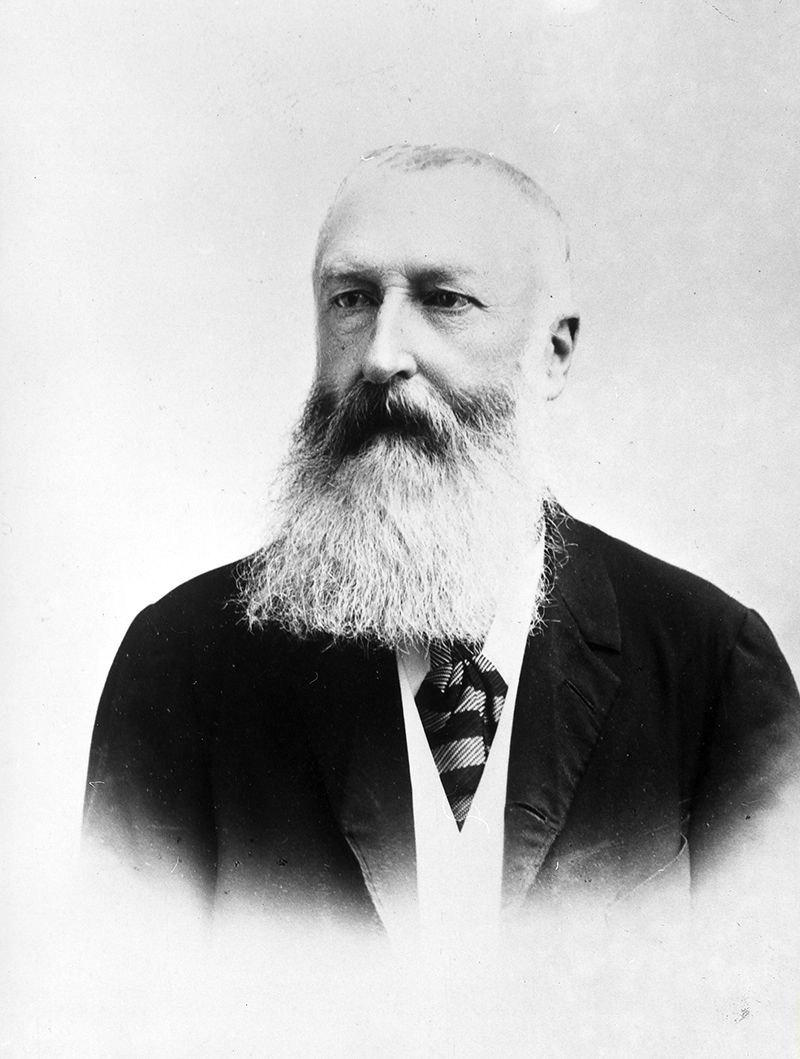Museumgoer Spots a Misidentified Portrait of Rodin
A Spanish graphic designer recognized his art hero in a portrait at Madrid’s Lázaro Galdiano museum labeled as the notorious King Leopold II of Belgium
/https://tf-cmsv2-smithsonianmag-media.s3.amazonaws.com/filer/d3/24/d32410bf-6b51-4c80-afb5-94e24bba4bc0/rodin_portrait.jpg)
Late last week, Spanish graphic designer Luis Pastor, who resides in Luxembourg, was visiting his mother in Madrid and tending to his sick son when he finally got an hour to himself. He decided to take a stroll through the nearby Lázaro Galdiano museum and soon came across a familiar face. There, in the museum’s miniatures gallery, he found a small portrait of French sculptor and accomplished beard-farmer Auguste Rodin, a man Pastor admired greatly in art school.
But when he glanced at the caption, he was flummoxed. The label identified the painting's subject as King Leopold II of Belgium, a bearded European with a penchant for genocide, not sculpture.
“I love Rodin and have been to the Rodin museum in Paris a lot,” Pastor tells Sam Jones at The Guardian. “I was obsessed with him as a student. I started Googling pictures of Leopold and thought ‘They do look like each other but that’s not Leopold.’”
After the visit, Pastor continued researching the image, convincing himself he was right. The clues were compelling. Rodin had very distinct blue eyes, like the portrait, while Leopold had dark eyes. And then there was the hairstyle. While Leopold kept his hair closely shorn, Rodin kept his hair in something like a crew cut, creating a 19th-century reverse mullet—business on top, big tangled party on the chin.
Pastor tweeted his findings, including the museum, in his thread. The institution said they would consult with their head curator, and on Tuesday, the museum tweeted out its findings.
“We now have a definitive verdict,” they wrote. “After numerous comparative analyses of portraits of both men, the miniature, catalogue number 3711, turns out to be a portrait of the sculptor Auguste Rodin. Many thanks to Luis Pastor for bringing it up!"
The museum also tweeted that it welcomes more corrections, and that attributions made in the pre-internet era may need to be changed.
Pastor tells Matthew Taub at Atlas Obscura that he thinks in the near future such corrections won’t require graphic designers researching things on the internet. Facial recognition software, he predicts, could be applied to positively ID such works.
The new attribution may also save the little portrait from being taken off display one day. King Leopold II is a controversial figure, and recently that controversy has heated up. The Belgian monarch took on the conquest of the Congo as his own personal project, and ruled an area roughly the same area as the modern Democratic Republic of the Congo as his own personal colony. His policies were extremely brutal, and his rule has been compared to that of Hitler; some critics say he was even worse. Leopold's administrators held women and children hostage, coercing millions of men into forced labor to build roads and tap rubber. Many were worked to death, and many women starved while being held in captivity. Women were routinely raped, and the hands of men were hacked off as punishment for minor crimes, and sometimes for no reason at all. The policies left few people to hunt, fish or plant crops for the population, leading to country-wide starvation.
Many of Leopold’s crimes will never be known; after international outrage over his administration, he was forced to turn the colony over to the Belgian government in 1908, but not before burning his colonial records, saying, “I will give them ‘my’ Congo, but they have no right to know what I did there.”
In total, it’s believed the population of the Congo dropped from 20 million inhabitants to 10 million between 1880 and 1920.

Leopold’s legacy has been in the news lately, with the Congo demanding the return of artifacts looted from that country and displayed in the newly refurbished Royal Museum for Central Africa in Belgium. In the wake of calls to remove Confederate statues in the United States, Alan Hope at Flanders Today reports that many Belgians are asking for the removal of the Leopold II statues that dot the small nation.
“There is no place for statues of Leopold II in the streetscape,” Tracy Bibo-Tansia, a Belgian of Congolese origin, told Hope. “And the same goes for places that carry his name, such as the Leopold II tunnel. Every Belgian, whatever their origins, ought to ask themselves whether they want to see statues to a criminal in their city.”
In 2016, a foundation stone laid by Leopold II at Queen Mary University in London was removed.
Pastor says he’s glad his ID kicked Leopold out of the Galdiano museum. “I also feel a tinge of personal pride at showing it’s not Leopold, who was responsible for a genocide,” he tells Jones at The Guardian. “That’s not bad is it? A win-win situation.”